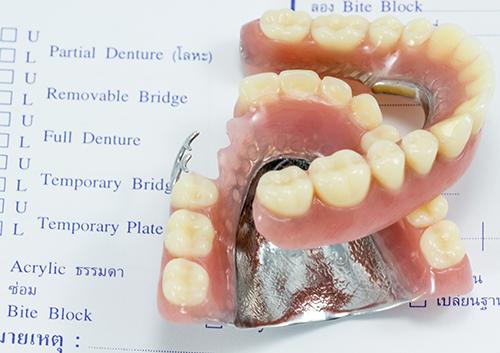What did the first dentures look like?
- posted: Apr. 17, 2024
Remember hearing about George Washington and his wooden choppers? Not his tools for cutting down cherry trees, but his false teeth. Actually, George’s teeth were made of ivory but were so Read More
Implants: Why it's important to replace missing teeth
- posted: Apr. 10, 2024
The average adult has 32 teeth, a combination of molars, canines, and incisors. By middle age, however, most adults are missing at least one tooth due to an injury, decay, Read More
Snowball Effect
- posted: Apr. 03, 2024
Winter and its snowball fights are behind us, true, but there might be another kind of snowball heading your way—the snowball effect you risk when small dental concerns are ignored Read More
How Missing Teeth Can Affect Your Health
- posted: Mar. 27, 2024
According to the American Academy of Periodontology, an estimated three out of four Americans suffer from gum disease. In milder cases, the disease is called gingivitis. More severe cases are Read More
Is a Lost Tooth a Lost Cause?
- posted: Mar. 20, 2024
We’re used to seeing athletes wearing mouthguards at practice or play, because dental trauma is one of the most common (and predictable) sports injuries. But it’s not just athletes who Read More
The Link Between Dental Hygiene and Your Overall Health
- posted: Mar. 13, 2024
When patients of Curt P. Posey, DDS, Inc. hear any mention of oral or dental hygiene, they probably think of brushing and flossing their teeth. Although these are extremely important, Read More
Top Reasons People Choose Veneers
- posted: Mar. 06, 2024
Dental veneers are a way to correct and transform your smile by using “contact lens”-thin shells of porcelain or ceramic material and bonding them to the front of your teeth. Read More
What is a crown?
- posted: Feb. 28, 2024
If you have never had a crown before, you might be wondering why crown treatment is best, what the procedure involves, and which type of crown to choose. Let’s get Read More
What's the best dental floss?
- posted: Feb. 21, 2024
Dental floss is similar to a lot of products that depend mainly on the consumer’s preference. Fact is, floss comes in a wide variety of flavors, coatings, and other variations, Read More
The Start of Valentine’s Day
- posted: Feb. 14, 2024
Valentine’s Day, also known as Saint Valentine’s Day, has been said to originate with a Catholic priest named Valentine several thousand year ago. Valentine defied the emperor at the time Read More
Healthy Gums and Older Adults
- posted: Feb. 07, 2024
One of the most important parts of staying healthy as we grow older is being open to learning new ways of staying healthy! While worrying about braces or wisdom teeth Read More
Sealants: What are they and how do they help?
- posted: Jan. 31, 2024
Molars are made up of canyons, caves, pits, and seemingly endless caverns that are a breeding ground for decay. The protective solution is a sealant. When done correctly, a sealant Read More
Ask Us about These Dental Treatments
- posted: Jan. 24, 2024
There are a few dental treatments that the doctor and our team recommend for all patients to get if they wish to protect their oral health. Sometimes it’s hard for Read More
Warning Signs of Impacted Wisdom Teeth
- posted: Jan. 17, 2024
You might suspect that your wisdom teeth are starting to emerge, but knowing the signs of impacted wisdom teeth can help you be more proactive about your dental care. Impacted Read More
Should I have TMD treated? Why?
- posted: Jan. 10, 2024
TMD occurs when your bite is not properly aligned. It can cause the jaw to experience unnatural stresses and prevent it from resting properly when your mouth is closed. If Read More
Tooth Protection and Winter Sports
- posted: Jan. 03, 2024
Just because it’s cold out there doesn’t mean you’ll give up keeping fit and active! Winter is the season for some of our favorite team sporting activities, and when you’re Read More
Curt P. Posey, DDS, INC.
Fresno, CA 93720


















